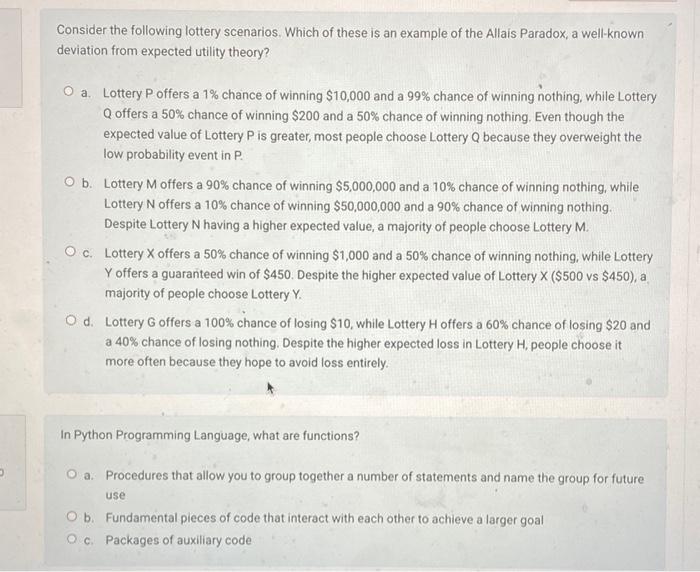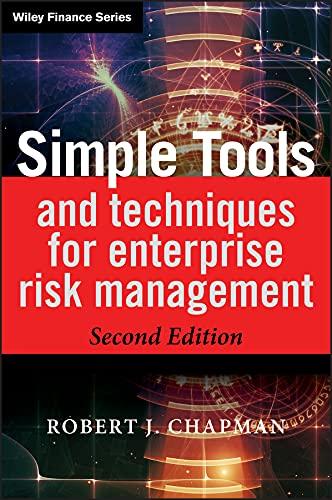Answered step by step
Verified Expert Solution
Question
1 Approved Answer
D Consider the following lottery scenarios. Which of these is an example of the Allais Paradox, a well-known deviation from expected utility theory? O a.
D Consider the following lottery scenarios. Which of these is an example of the Allais Paradox, a well-known deviation from expected utility theory? O a. Lottery P offers a 1% chance of winning $10,000 and a 99% chance of winning nothing, while Lottery Q offers a 50% chance of winning $200 and a 50% chance of winning nothing. Even though the expected value of Lottery P is greater, most people choose Lottery Q because they overweight the low probability event in P. O b. Lottery M offers a 90% chance of winning $5,000,000 and a 10% chance of winning nothing, while Lottery N offers a 10% chance of winning $50,000,000 and a 90% chance of winning nothing. Despite Lottery N having a higher expected value, a majority of people choose Lottery M. O c. Lottery X offers a 50% chance of winning $1,000 and a 50% chance of winning nothing, while Lottery Y offers a guaranteed win of $450. Despite the higher expected value of Lottery X ($500 vs $450), a majority of people choose Lottery Y. O d. Lottery G offers a 100% chance of losing $10, while Lottery H offers a 60% chance of losing $20 and a 40% chance of losing nothing. Despite the higher expected loss in Lottery H, people choose it more often because they hope to avoid loss entirely. In Python Programming Language, what are functions? O a. Procedures that allow you to group together a number of statements and name the group for future use O b. Fundamental pieces of code that interact with each other to achieve a larger goal O c. Packages of auxiliary code

Step by Step Solution
There are 3 Steps involved in it
Step: 1

Get Instant Access to Expert-Tailored Solutions
See step-by-step solutions with expert insights and AI powered tools for academic success
Step: 2

Step: 3

Ace Your Homework with AI
Get the answers you need in no time with our AI-driven, step-by-step assistance
Get Started


